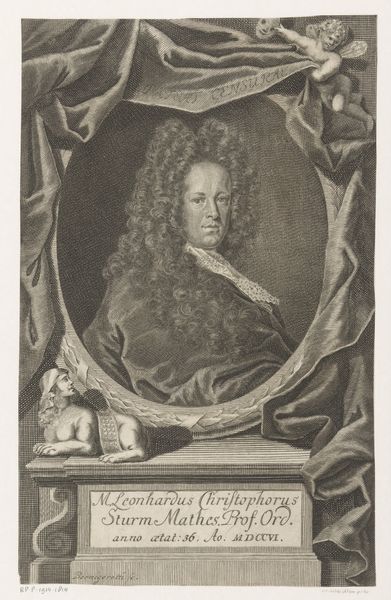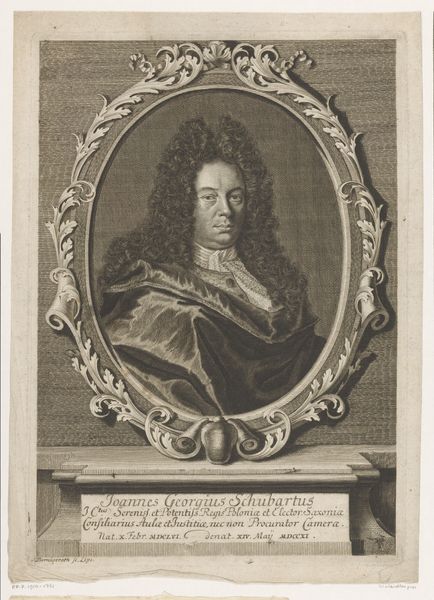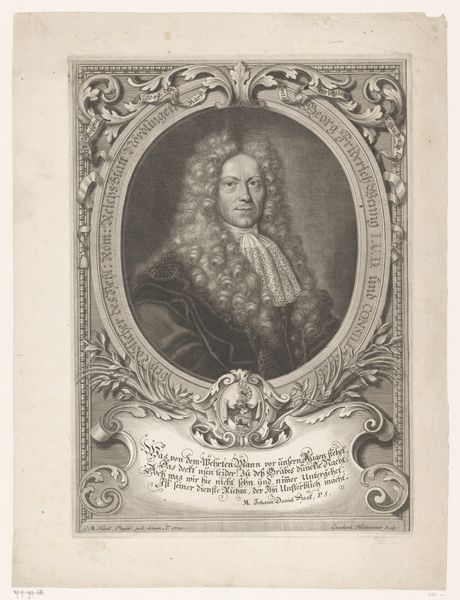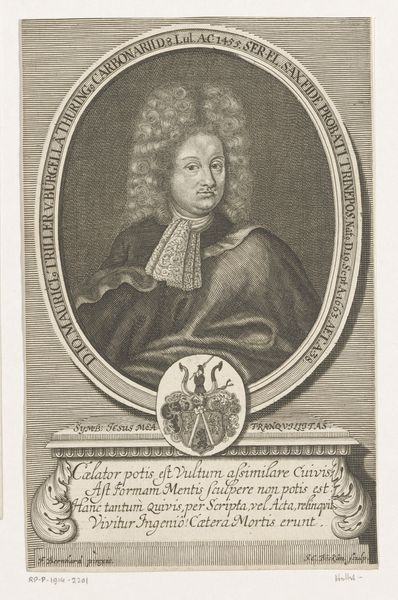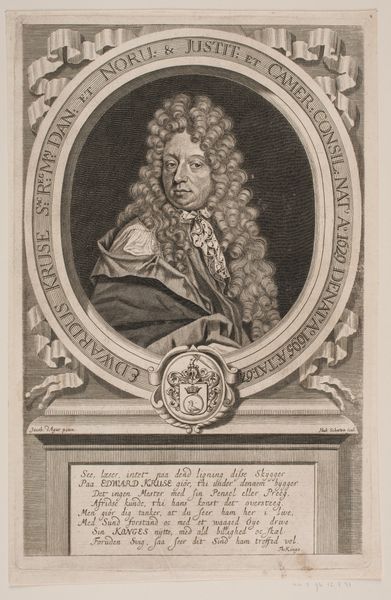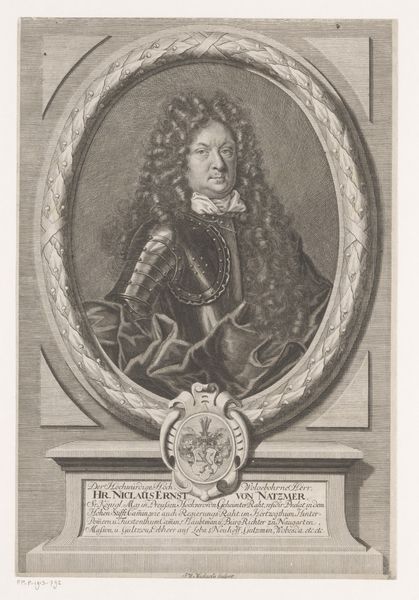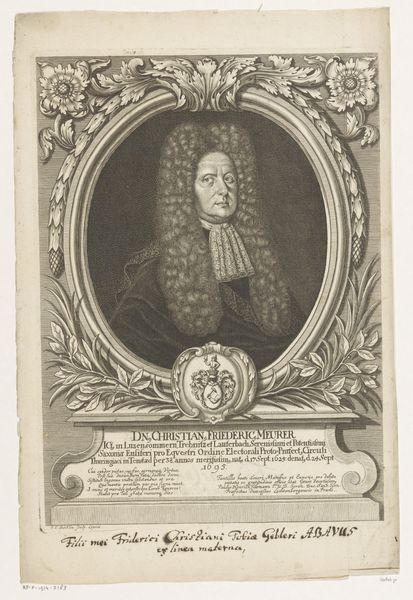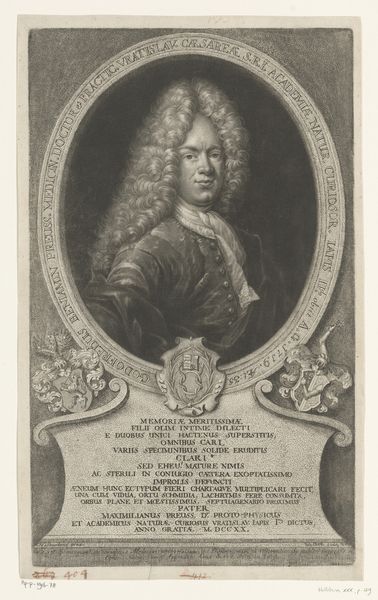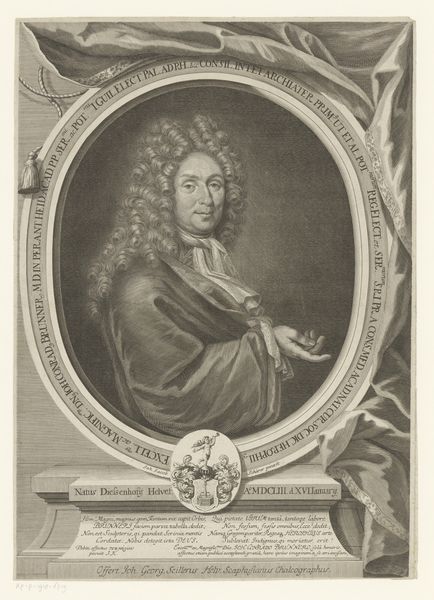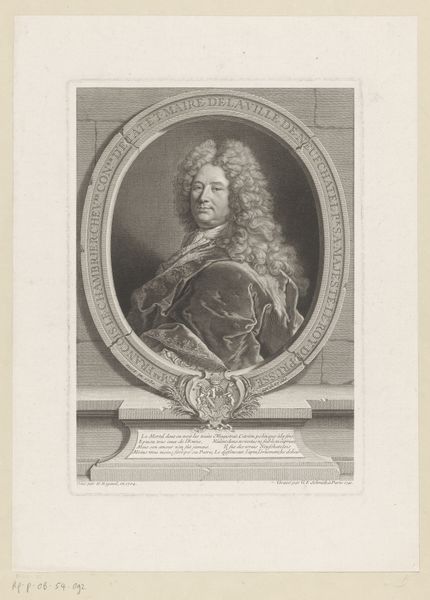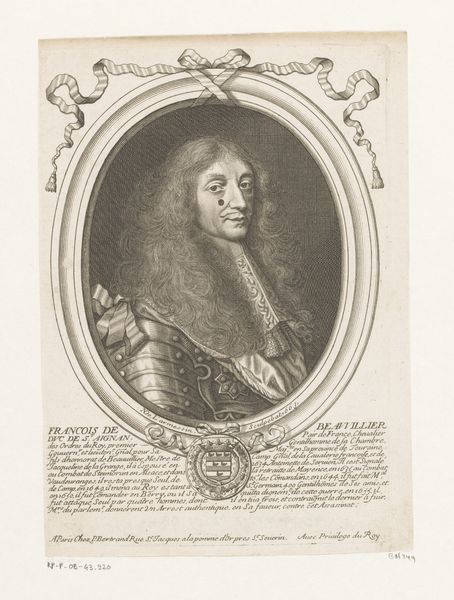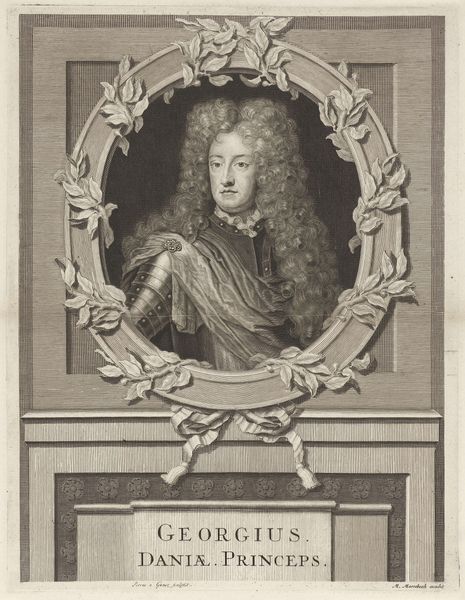
print, engraving
#
portrait
#
baroque
# print
#
engraving
Dimensions: height 387 mm, width 279 mm
Copyright: Rijks Museum: Open Domain
Curator: Ah, here we have a Baroque portrait. It's an engraving entitled *Portret van Christian Sigismund Schacher*, dating from around 1699 to 1709. The artist is Johann Christoph Boecklin, and it resides here at the Rijksmuseum. Editor: My initial reaction? It's theatrical! The swirling frame, the dense wig—it's all about conveying power and status. It's like a performance of identity. Curator: Indeed! That elaborate wig alone tells us so much. It signifies wealth and belonging to a particular class and intellectual milieu. Christian Sigismund Schacher was, as the print itself states, a "Doctor of Law." It’s about constructing an image of authority. Editor: And the framework becomes crucial here; how does it support such constructs? Look closely—the cartouche framing Schacher acts almost like a stage. Note the Latin inscription at the top. Everything emphasizes legacy and inscription within legal and intellectual history. But I find the visual language rather suffocating. Curator: Perhaps, but within the context of Baroque aesthetics, this visual density creates richness. Consider the technical skill involved in achieving these fine lines through engraving! Think of the patience needed. It's more than just depicting someone, it's a feat of meticulous craftsmanship. The texture itself speaks to labor and luxury. Editor: I acknowledge the skill, but I am drawn back to the questions that visual display raises, here particularly. Who is invited into this world? The self-contained construction almost seems to reject the uninitiated observer. Curator: But there's a sense of invitation too. These prints were often circulated among elite circles, used as calling cards and signals of allegiance and respect within a closed network. I suspect those who came into contact with such works may have had rather different sentiments about the works. Editor: The image does prompt a wider point. Art of this era often reminds us that identity is so bound up with class and presentation, a staged affair played out against a backdrop of immense inequality. Curator: Yes, that visual intensity serves to assert dominance and control in a hierarchical world. Though looking closer is always more fruitful, these pieces have an odd appeal beyond whatever they are advertising. Editor: Well said. Engaging with art like this reminds me to remain acutely aware of the power dynamics at play in representation, even those of the long-gone elite. A fitting note on which to leave off, I think.
Comments
No comments
Be the first to comment and join the conversation on the ultimate creative platform.
